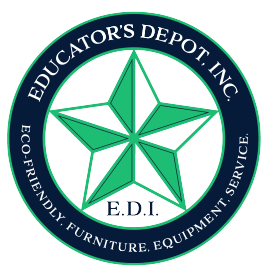Transforming School Cafeterias: Beyond Just Lunch Spaces
By Bobby Comer- Sr. Project Manager-Learning Environment Specialist(SR. PM-LES)
Historically, school cafeterias have evolved from simple eating areas to multi-functional spaces, reflecting changes in education and society. Originally, American school children either went home for lunch or brought packed lunches. With the rise of industrialization, cafeterias emerged as efficient feeding lines, soon becoming a staple in schools.
Today, the traditional big-box cafeteria design is now being reevaluated due to economic constraints and the push for 21st Century learning. Schools are recognizing the need for spaces that serve multiple purposes without compromising functionality.
A prime example of this evolution is found in Willis ISD’s Lagway Elementary. Here, a cafeteria / performing arts venue was created to serve as a multipurpose room. Our creative use of Mobile Convertible Bench by AmTab allows students to feel as though they are not eating in a theater or watching a performance in a cafeteria. It’s a practical, multipurpose room that inspires students and accommodates various activities, from breakfast gatherings to community events.
Key design features include but are not limited to flexible seating arrangements whereby the benches can be set up as cafeteria tables for eating or benches during community events, plays, and assemblies. These design choices not only enhance student interaction but also allow for quick conversion from dining to audience seating. The commons area serves the students as a dual-purpose environment, a hub for social and intellectual engagement.
The rethinking school cafeterias includes more than just redesigning a space. It’s about creating environments that adapt to the changing educational landscape, fostering community, and enhancing the student experience.
Bobby Comer is an accomplished Project Manager and boasts an impressive 8-year tenure at Educator’s Depot. His specialty lies in consulting and creating collaborative learning environments, where he applies his extensive experience and sharp project managerial skills. His local insight and deep understanding of educational systems allow him to deliver results that surpass client expectations, fostering lasting relationships in the process.
